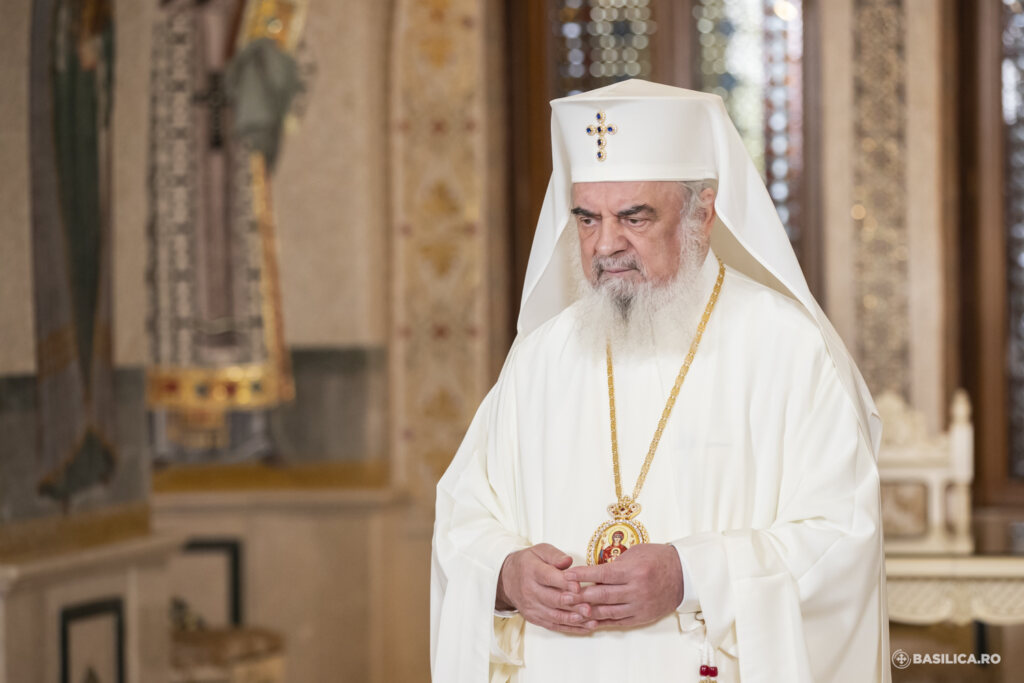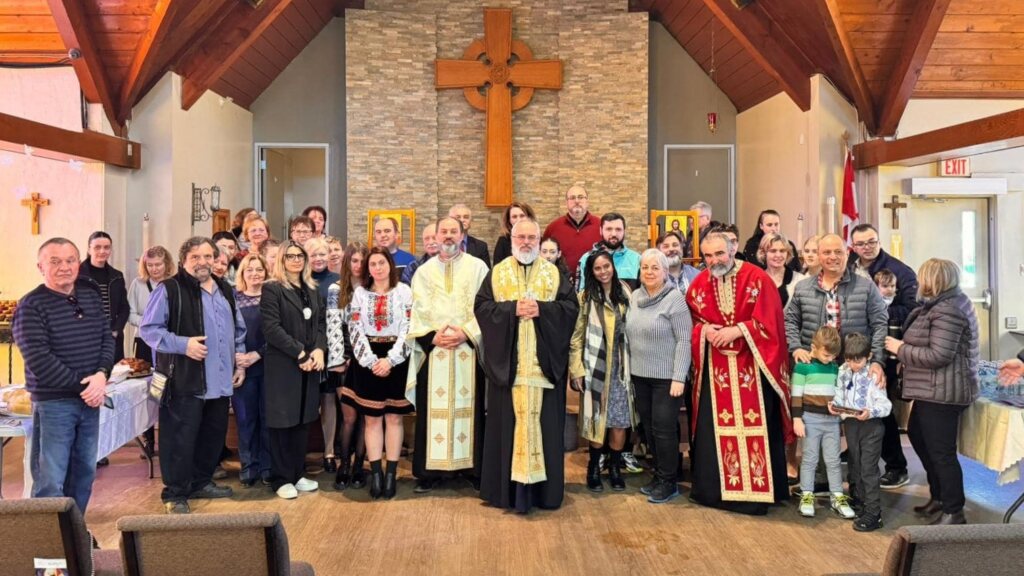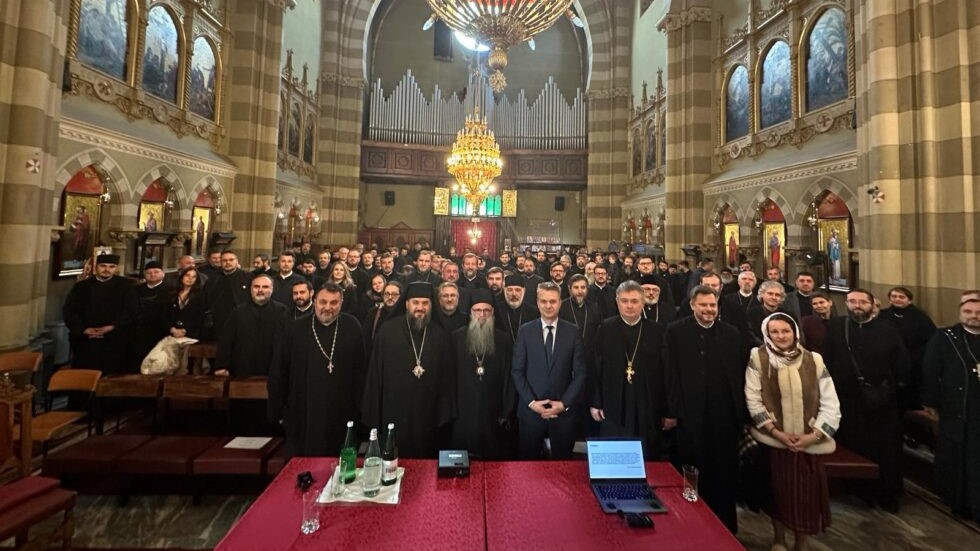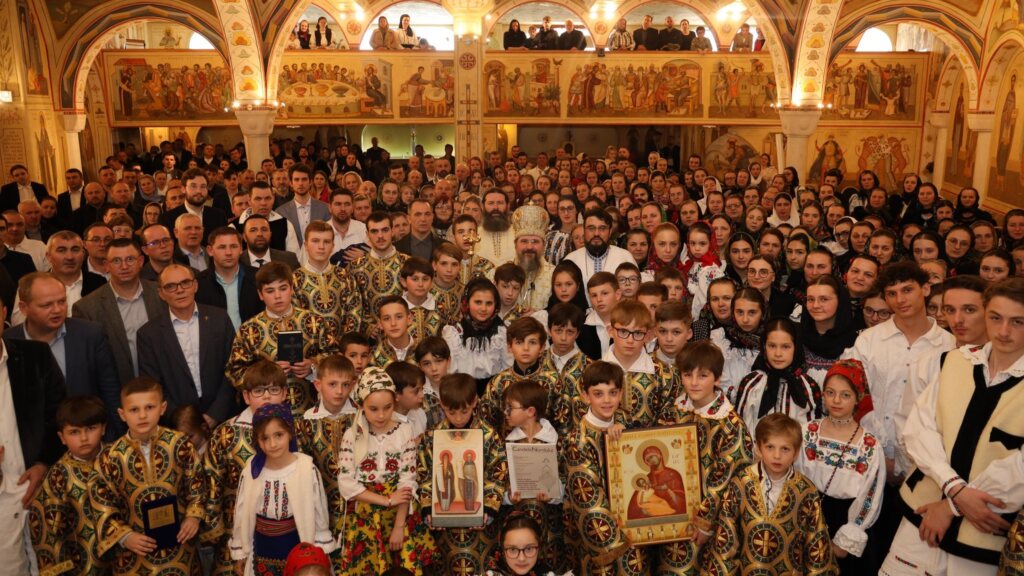Holy Prophet Habakkuk
The eighth of the Twelve Minor Prophets was descended from the Tribe of Simeon, and he prophesied around 650 B.C.
The Prophet Habakkuk foresaw the destruction of the Jerusalem Temple, the Babylonian Captivity and the later return of the captives to their native land. During the war with the Babylonians the prophet withdrew to Arabia, where the following miracle occurred.
When he was bringing dinner to the reapers, he met an angel of the Lord, and instantly by the strength of his spirit he was transported to Babylon, where at the time the Prophet Daniel was languishing in prison. The food intended for the reapers assuaged the hunger of the exhausted Prophet Daniel (Dan. 14:33-37).
After the end of the war with the Babylonians, the Prophet Habakkuk returned to his homeland and died at a great old age. His relics were found at the time of Emperor Theodosius he Younger (408-450), together with the relics of the Prophet Micah (August 14).
The Fourth Ode of the Psalter (“O Lord, I have heard thy report, and was afraid…”) is based on Habakkuk 3:2-19.
Holy Martyr Myrope
She was born in the city of Ephesus at the beginning of the third century. She lost her father at an early age, and her mother raised her in the Christian Faith. Saint Myrope frequently visited the grave of the Martyr Hermione (September 4), daughter of the holy Apostle Philip, took myrrh from her relics, and healed the sick with it.
During the persecution by Decius (249-251), Myrope went with her mother to the island of Chios, where they spent their time in fasting and prayer. Once, by order of the cruel governor of the island, the soldier Isidore (May 14), a man of deep faith and great piety, was martyred. Saint Myrope secretly removed the body of the martyr and buried it. The soldiers, who had been ordered not to allow the Christians to take Isidore’s body, were sentenced to death.
Saint Myrope took pity on the condemned, and she told the soldiers and then the governor what she had done. At the trial she confessed herself a Christian. For this they gave her a fierce beating and then threw her in prison. At midnight, while she was praying, a light shone in the prison. Saint Isidore appeared surrounded by angels, and Saint Myrope surrendered her soul to God.
The prison was immediately filled with a sweet fragrance. The pagan guard, trembling at the vision, told this to a priest. Later, he accepted Baptism and a martyric death for his confession of Christ.
Troparion — Tone 4
Your lamb Myrope calls out to You, O Jesus, in a loud voice: / “I love You, my Bridegroom, and in seeking You I endure suffering. / In Baptism I was crucified so that I might reign in You, / and I died so that I might live with You. / Accept me as a pure sacrifice, / for I have offered myself in love.” / Through her prayers, save our souls, since You are merciful.
Saint Porphyrios the Kapsokalyvite
He was born February 7 in the little village of St. John Karystia, in the province of Evoia. His parents, Leonidas and Eleni Bairaktaris (daughter of Antonios Lambrou), christened him Evangelos. He was fourth out of five siblings. Only his youngest sister is still alive and is a nun.
His family was quite poor and so Evangelos left school at an early age, having completed only the second class of primary school, to assist his family to make more money. At some stage, he found a job working at a grocer store in Chalkidiki and also in Piraeus. He was taught to pray the Paraklesis by his father and all other religious matters.
At age 13, he found his way to the skete of the Holy Trinity (Kafsokalyvia). Later tonsured with his monastic name of Nikitas. He became a monk at the age or fourteen of fifteen. He served in the skete of Kafsokalyvia, in the Cell of St. George, under two spiritual fathers: Fr. Panteimon and Fr. Ionnakios for six years. Forced by pleurisy to depart the Holy Mountain, he returned to his birthplace, where he was unexpectedly elevated to the priesthood at the age of 21 by Porphyrios III, Archbishop of Mount Sinai and Raithu, who recognized his spiritual gifts. With the outbreak of World War II he became a hospital chaplain in Athens, serving in the church of Saint Gerasimos, in which post he continued for three decades until his retirement in 1970. He continued to offer his service there until 1973, after which he served in Kallithea and Milesi. His later years were devoted to the construction of the Holy Convent of the Transfiguration of the Savior
In 1984 he sought to return to Mount Athos in order to occupy the same cell which he had earlier in life been forced to abandon. This was in order to fulfil his monastic vows and to avoid any honors by being buried in the world. The request was granted following the repose of the previous occupant of the cell, and so, together with three of his disciples, he returned to Mount Athos.
Having foretold to one of his spiritual children that he would repose when the number of his disciples in the cell had reached five, prepared his tomb. His blessed repose was at 4:31am on December 2, 1991.
Troparion — Tone 2
We celebrate the memory / of Your prophet Habakkuk, O Lord; / through him we entreat You, / save our souls.
We also celebrate today Holy Hierarch Solomon, Archbishop of Ephesus.
Tr by oca.org: Orthodox Wiki








